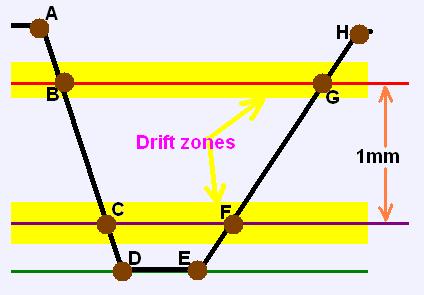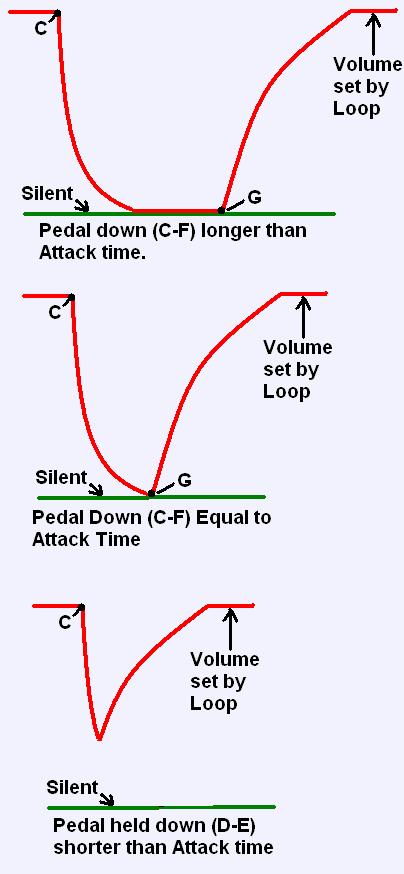Hi Dewster and Gordon,
Re: PSoC 4 board (thanks for bringing this to my attention Dewster ;-)
I have played hardly at all with the PSoC 4 (its the baby of their recent family - first there was PSoC 1 which was slow, then 3 [8051] and 5 [ARM] and then 4. Mostly I have used PSoC 1)
And I hadnt seen this $4 breakout board! - Now this really has the potential to change the whole picture I think, its quite a powerful little part - The DAC's and MDAC's on PSoC 1 were one of its biggest problems, because although technically they met their specification (speed wise) Cypress failed to mention that in order to do so, the entire ALU would be fully occupied and unable to do anything else. The M8 (in the PSoC 1) however was only capable of 4 MIPS - And I think Cypress will have learned their lesson from their misleading claims re the PSoC 1 DACs (it caused a lot of protest and lost business) so suspect 8 bits at 100kHz is at least close to the true specification.
I have the full DK for the PSoC 4 but have never run it (the DK has a PSoC 5 on board as well, and I only played with this - other than just looking briefly at the '4s code and demo).
PSoCs are the kind of part that can almost always be made to do a lot more than application notes or "in-your-face" stuff shows - I managed to get the PSoC 1 DACs to run at twice the speed the supplied UM's achieved (I had to - a major project was utterly dependent on this) but I needed to delve deep into the configuration registers and entirely re-write the API's.
What I am saying I suppose is this - I am reasonably confident that the PSoC 4 could do "the job" called for by this pedal application, including full ADSR - Also, MDACs (effectively DACs with access to the 'reference' voltage - as in, you can modulate the DAC either from an external or internal analogue signal, or tie the reference to a voltage which defines the full-scale output) should allow other interesting things to be done.
The price of these boards completely changes the situation for me - even at £4 a board, being able to deal with a small DIL module as opposed to buying a SMD (at about £2) and producing the required PCB for it and its essential components makes it possible to prototype and go into production. Even if more than 1 module was required (which I doubt) it would still possibly be the cheapest and best solution.
"Actually, two thoughts. How nifty is a PSoC? Could we use it to do some AM synthesis on the audio signal via the VCA? This is my line of thinking - one of the ways that the "magic" of the theremin is described is that it has the qualities of an acoustic instrument. So, let's think about what happens when..." - GordonC
The points you make about the attack on acoustic instruments (struck / plucked) is valid and important for those type of instruments (and of high importance when replicating pipe organs and the like) and I agree there may be added acoustic qualities available for your proposed application (which is effectively providing a percussive envelope to the theremin signal) However I do not think *this mechanism is responsible for the acoustic qualities of conventional theremins (even the most rapid movements on the volume rod / loop would not "need" these attributes) - *The only related mechanism I could see would be if rapid volume movements subliminally modulated the pitch - something thereminists would deliberately try to avoid and/or correct, but nonetheless may be "important" and must to some extent happen (even if the pitch rod did not "pick up" the volume hands movement, movement of this hand will change player capacitance due to coupling to the theremin or other grounded objects - the degree of this capacitance change will have complex variables in the equation, but the most important will probably be the players bulk coupling to ground).
Its a really interesting idea you have thrown into the theremin 'matrix' here - I have been (and still believe it a big part of the picture, but now wonder if its the full picture) convinced that it was audio modulation of variable frequency oscillator (which effectively produces the audio) that provides the bulk of the acoustic qualities from a theremin - particularly when this feedback is non-linear (as in, you cannot simply tap the audio [difference] frequency and feed it to the VFO as a modulating signal, it needs to go through filters at least, is better via "formant" bandpass filters, and is best if it also has a mechanical transducer and physical resonator [block of wood or whatever] in its path).
My only (little) experience I have regarding the 'chaotic' first few cycles of the attack phase has been with attempts to emulate pipe organ "chiff" and it was extremely difficult! - there can be about 10 cycles (or even longer) before pipe resonation settles to a steady state, but these cycles are far from "chaotic" - they are, however, not often harmonically related to the frequency the pipe is 'singing' when its stable, and opinions about what sounds "authentic" or "pleasant" or "bloody horrible" might even be more contested than thereminist discussing what a "true" theremin sound should be..
What I am saying is that its probably not going to be a simple matter of modulating the amplitude of the attack portion with a PRBS or anything like that to obtain an 'acoustic' quality from the theremin - Your thoughts though have led me to wonder whether miniscule modulation of the theremin pitch by the envelope (or attack thereof) might achieve this quality (if it exists).. Sadly, doing this could be a teeny bit more difficult.
Fred.
Farnell are selling these in the UK for £2.62 !! (Excl VAT) - This is just incredible! (Farnell has only the 4100 in stock, 4200 on order - IMO, wait for the 4200!)
*I dont think that the DAC's would be available if one was using driven shielded Capsense for the pedal - In this case, I think the best way to implement "VCA" may be to with PWM, and drive analogue switches to perform the VCA function, or (probably better) generate a CV that is then fed to a conventional analogue VCA.
Using PWM driven from the 48MHz you could get 10 bit resolution with 46.8kHz PWM clock, which should be good enough.
Oh - Be sure to get the 4200 not the 4100 if you want programmable digital blocks - the 4100 has none of these, the 4200 has 4 (4*UDB) - These blocks can be configured by the developer to provide functions not otherwise available, and (certainly for me) are essential.



